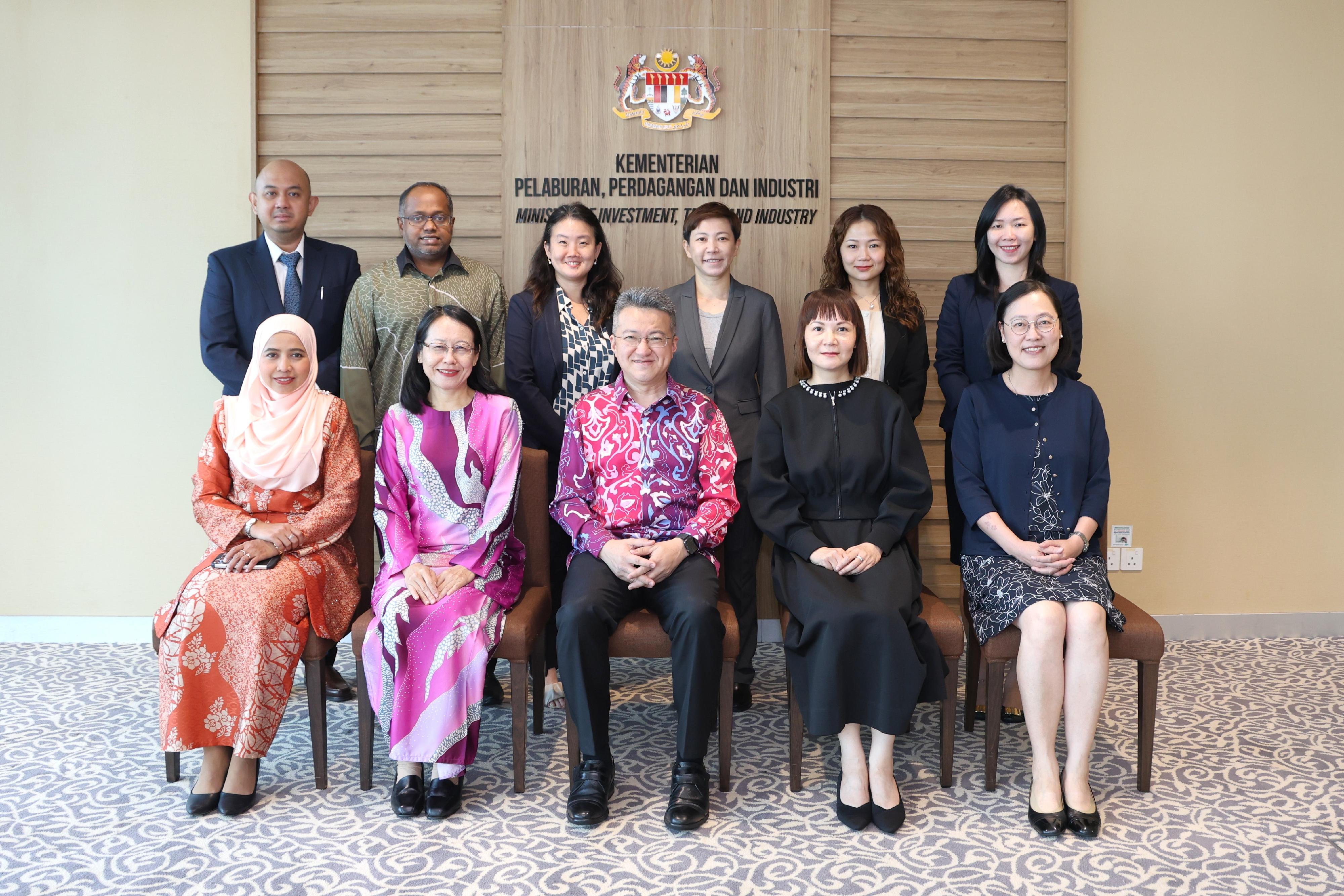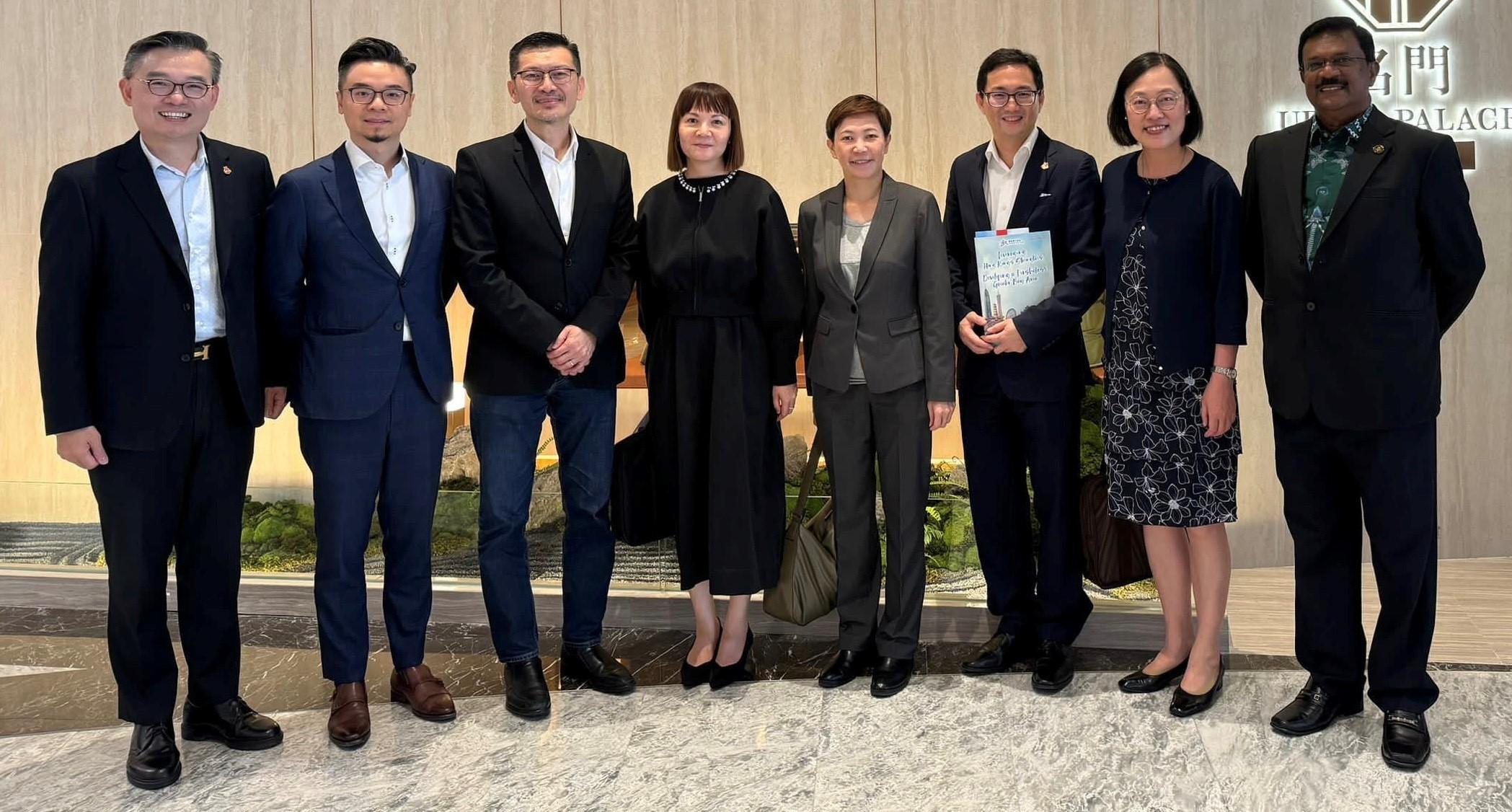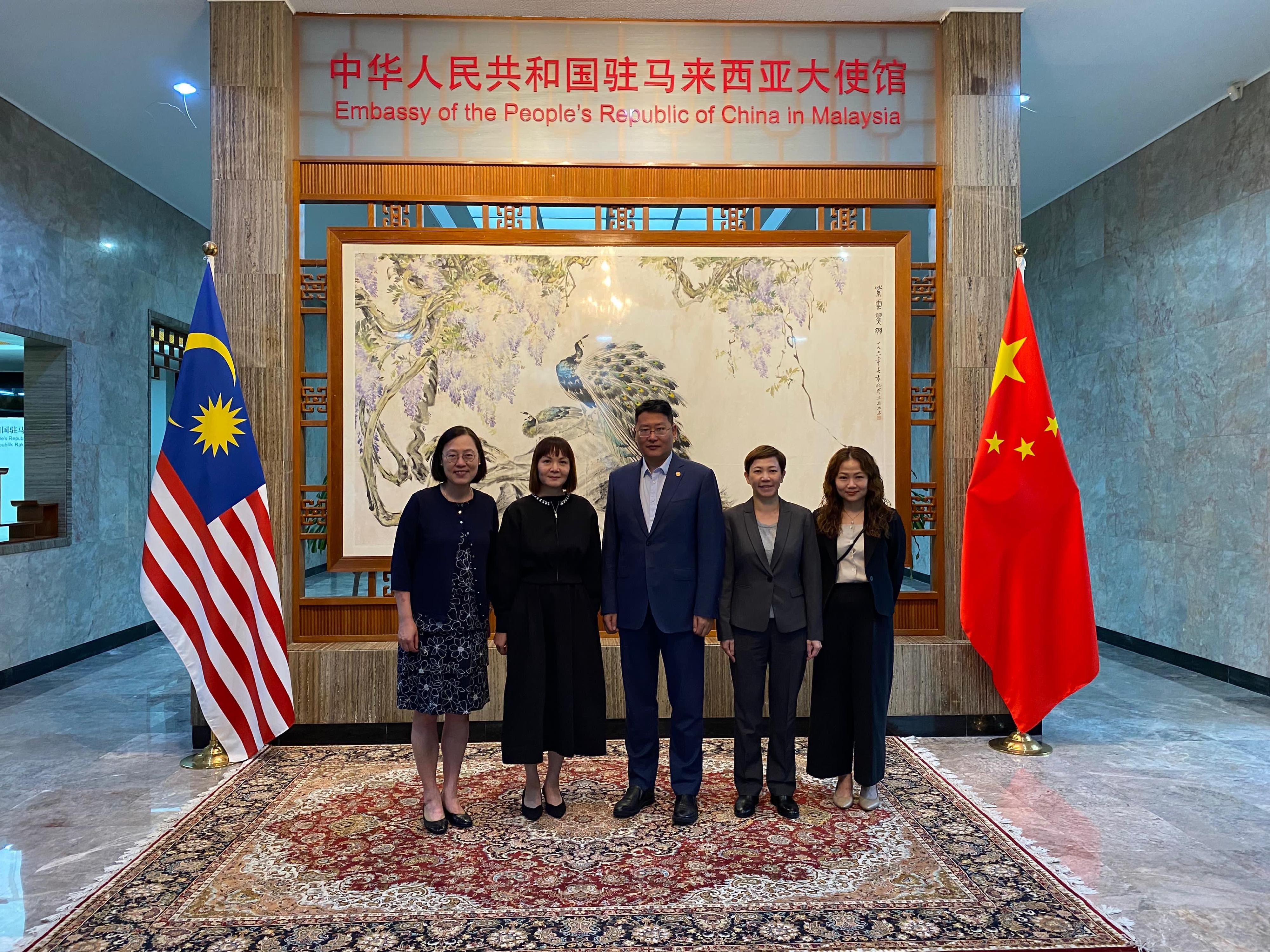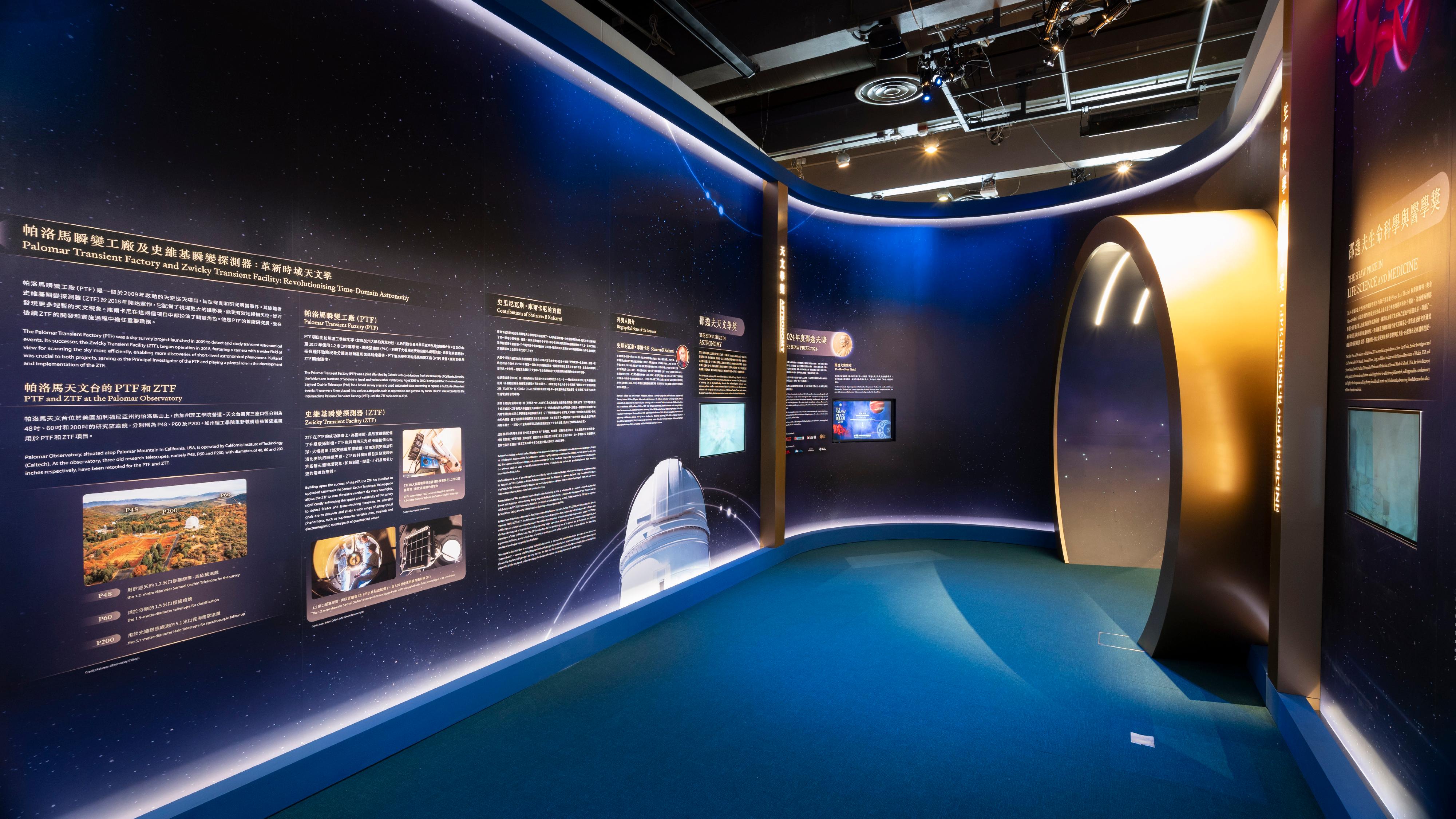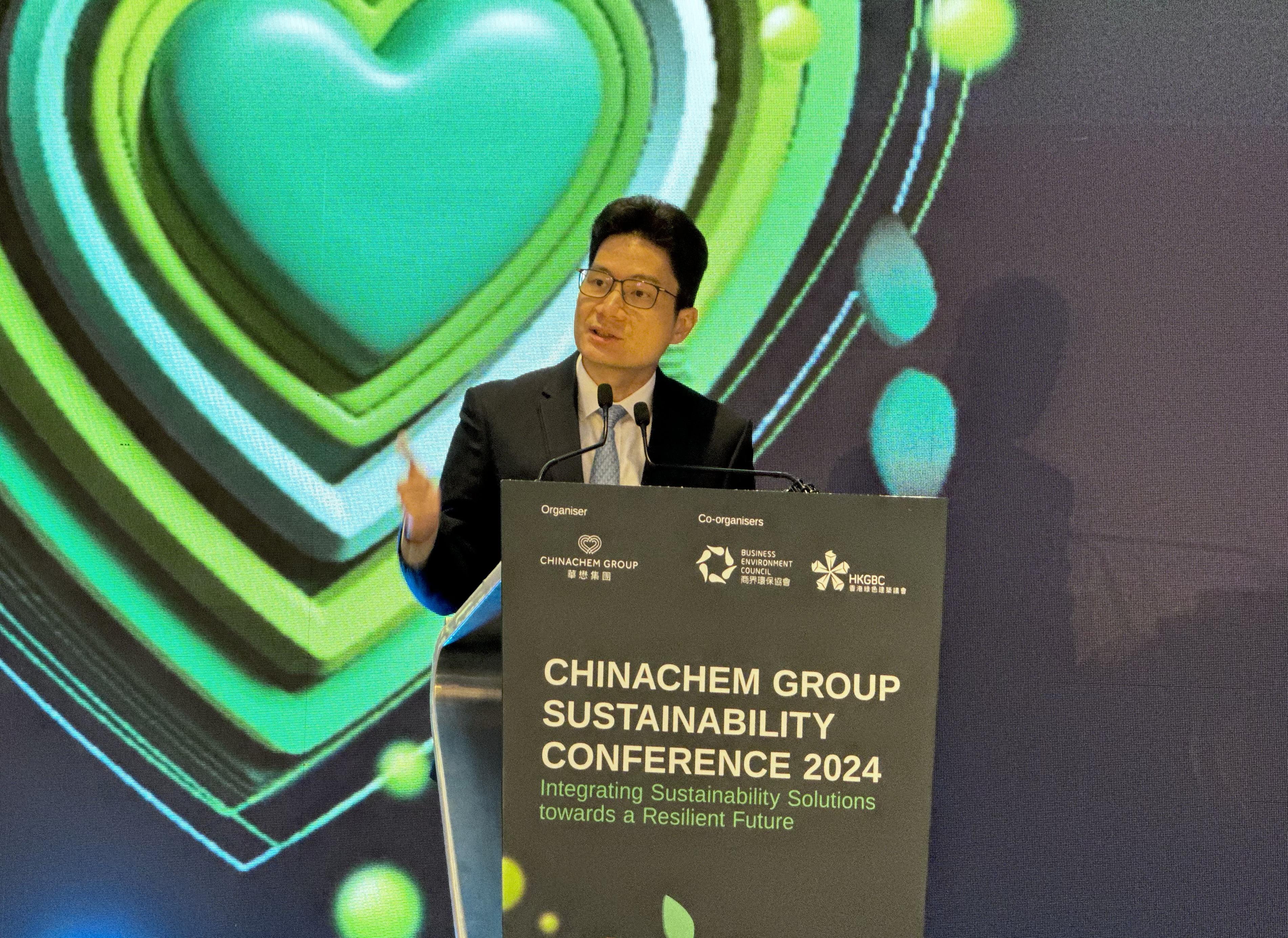Following is the speech by the Acting Secretary for Financial Services and the Treasury, Mr Joseph Chan, at the Chinachem Group Sustainability Conference 2024 today (November 7):
Mr HH Wong (Executive Director and Chief Operating Officer of the Chinachem Group, Mr Wong Hung-han), Mr Simon Ng (Chief Executive Officer of the Business Environment Council, Mr Simon Ng), Dr TC Cheung Tin-cheung (Chairman of the Hong Kong Green Building Council, Dr Cheung Tin-cheung), distinguished guests, ladies and gentlemen,
Good afternoon. It is my great pleasure to join you at the Chinachem Group Sustainability Conference 2024.
First of all, I would like to extend my heartfelt thanks to the organiser Chinachem Group, for hosting this remarkable event for the fifth year. Today's conference, themed "Integrating Sustainability Solutions towards a Resilient Future", is a key event featuring engaging speeches, insightful discussions and valuable networking opportunities for all participants. This conference not only enhances accessibility but also fosters collaboration among attendees on the timely topic of exploring holistic solutions to tackle the interconnected challenges of climate change, sustainable financing, and impact investment.
Here in Hong Kong, we enjoy a distinctive blend of advantages under the "one country, two systems" principle. On one hand, our core strengths include free flow of capital, a robust common law system, a simple and low tax regime, and a regulatory framework aligned with major international markets. On the other hand, Hong Kong enjoys preferential access to Mainland China, the world's second-largest economy. These dual advantages position Hong Kong as the "super connector" between China and international markets, between the East and the West.
Hong Kong is Asia's leading international financial centre, leading on various league tables in the region, including the amount of Asian international bond issuance, insurance density, size of cross-border wealth management, the scale of hedge fund business, etc. As Asia's leading international financial centre, Hong Kong is well positioned to channel investment to the green transformation of the economy in China, Asia and beyond. Indeed, Hong Kong has already become the largest centre for arranging green and sustainable bond issuances in Asia for consecutive years, accounting for 37 per cent of the Asia market last year.
The global demand for green capital is enormous. A market report estimated that annual climate investments would reach US$9 trillion by 2030. To develop the green bond market, the Hong Kong SAR (Special Administrative Region) Government has led by example by issuing close to US$28 billion equivalent in green bonds since 2019 under our Government Green Bond Programme. We have issued with different tenors ranging from one year to 30 year, in different currencies including Hong Kong dollar, Renminbi, euro and US dollar, as well as with different types of offerings including institutional, retail and tokenised tranches. These issuances provide benchmark pricing for potential issuers and enrich our sustainable finance ecosystem. In May this year, the Government expanded the scope of the Government Green Bond Programme and renamed it as the Government Sustainable Bond Programme to cover sustainable projects, and established the Infrastructure Bond Programme to raise capital for infrastructure projects, thereby facilitating the early completion of projects for the good of the economy and people's livelihood.
The depth of our sustainable finance is not only limited to the sell side. On the buy side, as of end-June this year, there were 233 ESG (environmental, social and governance) funds authorised by Securities & Futures Commission (SFC) in Hong Kong, with total assets under management (AUM) of US$169.3 billion. The number of ESG funds and the total AUM of ESG funds grew by 19 per cent and 8 per cent respectively on a year-on-year basis. In addition to our scale and growth in sustainable finance, Hong Kong has also become a pioneer in developing new green financial products. The first Asian Green Bond Exchanged Traded Funds (ETF), the first offshore A-shares ESG ETF, and the Asia's first Retail Certificate of Green Deposits were all issued in Hong Kong.
Hong Kong currently has about 1 100 fintech companies. Such a number grew by about 15 per cent from last year. With our scale and growth in both green finance and fintech, Hong Kong is a perfect location for developing green fintech. Last year, Hong Kong became the first government in the world that issued a tokenised government green bond, demonstrating that we recognise the importance of combining green finance and fintech to further improve the efficiency of channelling green capital to combat climate change. In March this year we launched the Prototype Hong Kong Green Fintech Map which was developed together with relevant stakeholders, to provide one-stop information on the current status of green fintech companies in Hong Kong and related services, with a view to raising the companies' profile.
In June this year, we launched the Green and Sustainable Fintech Proof-of-Concept Funding Support Scheme to provide early-stage funding to support technology companies or research institutes conducting green fintech activities to collaborate with local enterprises to codevelop new projects in the market that can address the industry pain points. The Scheme facilitates the solutions concerned to complete the commercialisation and proof-of-concept stage, and enables wider adoption of green and sustainable fintech solutions with potential in the business landscape of Hong Kong. The maximum grant for each approved project is HK$150,000.
Green and sustainable finance is developing very quickly and talents are crucial for its further growth. The Government launched a three-year Pilot Green and Sustainable Finance Capacity Building Support Scheme in December 2022 for application by market practitioners and related professionals as well as students and graduates of relevant disciplines. After completing eligible programmes or accomplishing relevant qualifications, applicants can apply for a subsidy of up to HK$10,000. As of this September, there were 73 eligible programmes and qualifications, and over 4 100 reimbursement applications had already been approved.
Ladies and gentlemen, the Government will continue to work with all our partners and stakeholders, including all of you here today, to promote the development of green finance, whilst strengthening Hong Kong's status as a leading international financial centre, which ranked third in the world and first in Asia under the Global Financial Centres Index. Let's continue to foster collaboration across our markets, and together we can harness the potential of Hong Kong's green financial ecosystem for driving towards a sustainable future in Hong Kong, China, Asia and beyond.
On this note, I would like to once again thank Chinachem Group for organising today's conference. Thank you all for being here today, and I wish you all a fruitful and inspiring conference. Thank you.
